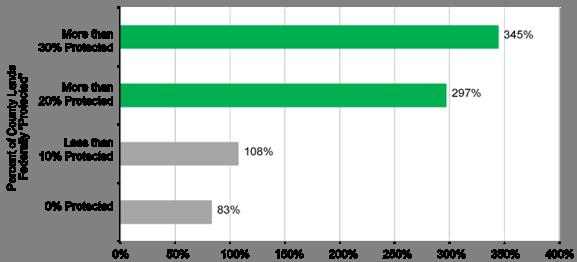Senator-elect Heinrich, Rural New Mexico Small-Business Owner Promote Economic Benefits of Protected Public Lands in the West
Note: While this article is not directly about Mexican gray wolves, the study shows that protected federal lands–such as national parks, monuments, and wilderness– are providing western states with a competitive economic advantage that has helped create more jobs and higher per capita income than the U.S. overall. This has important implications for wolves and all the other wildlife that depend on public lands.
 On Thursday Senator-elect Martin Heinrich and Lee Gruber, owner of Silver City’s Syzygy Tileworks, discussed the New Mexico implications of a new economic study that showed how the western United States is outperforming the rest of the country in job creation, personal income, and several key economic indicators, and that protected federal lands–such as national parks, monuments, and wilderness– are providing western states with a competitive economic advantage that has helped create more jobs and higher per capita income than the U.S. overall.
On Thursday Senator-elect Martin Heinrich and Lee Gruber, owner of Silver City’s Syzygy Tileworks, discussed the New Mexico implications of a new economic study that showed how the western United States is outperforming the rest of the country in job creation, personal income, and several key economic indicators, and that protected federal lands–such as national parks, monuments, and wilderness– are providing western states with a competitive economic advantage that has helped create more jobs and higher per capita income than the U.S. overall.
The national report was released yesterday.
The study, conducted by Headwaters Economics out of Montana, is the culmination of several years of research that looked at the relationship between historic western job growth over the past four decades and where that job growth occurred. Western non-metropolitan counties with more than 30 percent of the county’s land base federally protected–such as national parks, monuments, wilderness areas, and other similar designations–increased jobs by 345% over the last 40 years. By comparison, counties with no protected federal public land increased jobs by 83%.
“Western job growth has been a phenomenon that needs exploration, especially as we seek to build a modern high-wage economy here in New Mexico,” said Senator-elect Martin Heinrich. “We can take great cues from this study as we seek to attract companies that are looking to offer their employees the quality of life that so many of us in New Mexico enjoy. That means adopting the mindset that public lands are here for us to enjoy, preserve and promote as assets to attract companies to our state.”
New Mexico business owner Lee Gruber agreed.
“Of course the growing West would see job growth over decades. What’s news is the much larger job growth that has occurred where there is more public lands,” said Gruber, who is co-founder, Syzygy Tileworks which is based in Silver City. Her company has about 20 employees. “This is evidence that growing companies looking to latch on to the Western lifestyle of outdoors activity and quality of life have gravitated toward places with protected land to enjoy.”
“This study shows that entrepreneurs and America’s most talented workers are choosing to live in places where they can enjoy outdoor recreation and a quality of life,” said Ray Rasker, PhD, Executive Director of Headwaters Economics that completed the report. “By highlighting access to national parks, forests, and other public lands, western communities and companies have created more new jobs than the U.S. as a whole.”
The full study can be found online at Headwaters Economics.
Here are highlights from the Headwaters report:
- Over the last four decades, western states are generally outperforming the rest of the country. The region’s employment, for example, has grown by 152 percent compared to 78 percent for the rest of the country.
- This western job growth was almost entirely in services industries such as health care, real estate, high-tech, and finance and insurance, which created 19.3 million net new jobs, many of them high-paying.
- Western non-metropolitan counties with more than 30 percent of federal public land protected as national parks, monuments, wilderness areas, and other similar designations increased jobs by 345% over the last 40 years. By comparison, counties with no protected federal public land increased jobs by 83%.
- Per-capita income in western non-metropolitan counties with protected public lands is higher than in other similarly located counties. For every gain of 10,000 acres of protected public land, per-capita income in that county in 2010 was $436 higher. So a county with 50,000 acres of protected lands saw a $2,180 increase; while one with 100,000 acres of protected public lands saw a $4,360 higher per capita income in 2010. For perspective, that same year the average per capita income for non-metro western counties was $34,870.
Today’s economic report echoes a letter from one year ago when more than 100 U.S. economists and academics—including Dr. Robert P. Berrens of UNM and Dr. Christopher A. Erickson of NMSU —urged the President to “create jobs and support businesses by investing in our public lands infrastructure and establishing new protected areas such as parks, wilderness, and monuments.” The letter states federal protected public lands are essential to the West’s economic future, attracting innovative companies and workers, and contributing a vital component of the region’s competitive advantage.
The report also comes on the heels of a May 2012 poll of western small business owners in Arizona, Colorado, Nevada, and New Mexico. It found that these entrepreneurs see a direct link between protected public lands and business vitality. For example:
65 percent of owners believe designating new national parks and monuments would enhance local jobs and the economy while 52 agree it would help their state attract and retain new business and entrepreneurs.
Graphic:
Percent Change in Employment, Western Non-Metro Counties, 1970 to 2010
This article came from the Dona Ana Democrats website.
Click here to join our email list and receive important Mexican gray wolf updates and action alerts.
Visit us on Facebook here.



